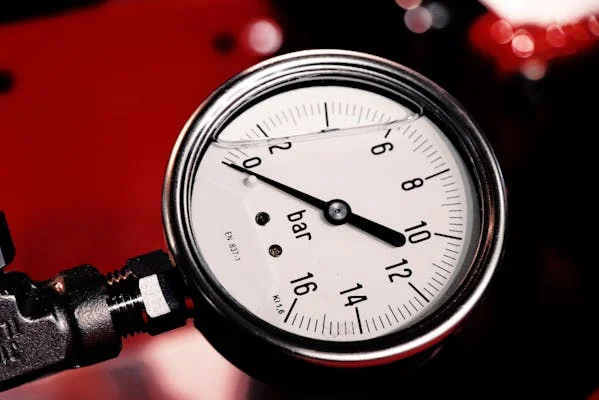Vacuum gauges, or vacumetros in Spanish, are essential devices used across various industries for measuring vacuum pressure within a sealed environment. This guide provides a detailed exploration of vacuum gauges, their types, functionality, and applications, while also covering important tips on choosing, installing, and maintaining these tools.
What Are Vacuum Gauges Vacumetros?
A vacuum gauge is a device that measures the pressure within a vacuum, typically in systems where creating low-pressure environments is essential. Commonly used in the automotive, scientific, and HVAC industries, these gauges help ensure proper functioning of systems that depend on precise vacuum levels.
How Do Vacuum Gauges Work?
Vacuum gauges operate by detecting changes in pressure within a vacumetros system. This measurement can be accomplished through various methods, depending on the type of gauge. In essence, these gauges compare the vacuum pressure with atmospheric pressure or measure pressure differences within a vacuum system.
Types of Vacuum Gauges
Different applications require different types of vacumetros gauges, each designed for specific pressure ranges and accuracies. Here’s a closer look at the primary types:
Mechanical Vacuum Gauges
Mechanical gauges are widely used for low-pressure measurements due to their simplicity and durability.
- Bourdon Tube Gauges: Use a coiled tube that flexes under pressure, providing a measurement based on movement.
- Diaphragm Gauges: Utilize a flexible diaphragm that reacts to pressure changes.
- Piston Gauges: Measure pressure changes by moving a piston in response to pressure variations.
Thermal Vacuum Gauges
Thermal gauges operate by measuring heat loss, which varies with pressure.
- Thermocouple Gauges: These use thermocouples to measure heat changes, suitable for low to medium vacuum levels.
- Pirani Gauges: Utilize a heated wire that detects changes in thermal conductivity within the vacuum.
Ionization Vacuum Gauges
Ionization gauges are ideal for measuring ultra-high vacumetros pressures.
- Cold Cathode Gauges: Use ionized gas particles for pressure detection.
- Hot Cathode Gauges: Employ heated filaments to create ionization, providing high-precision measurements.
Capacitance Vacuum Gauges
Capacitance manometers are highly accurate and operate based on capacitance changes between a diaphragm and a reference electrode.
Key Components of Vacuum Gauges
Understanding the main components of a vacumetros gauge can help with proper usage and troubleshooting.
- Sensors: These detect changes in pressure and are tailored to the gauge type.
- Display Units: Digital or analog displays provide easy-to-read results.
- Calibration Elements: Ensure accuracy by allowing for adjustments as necessary.
Applications of Vacuum Gauges
Vacuum gauges play a crucial role in several industries:
- Automotive: Measuring engine manifold pressures and turbocharger efficiency.
- Scientific Research: Creating controlled vacuum environments in laboratories.
- HVAC: Maintaining proper pressure levels in heating and cooling systems.
- Manufacturing: Vacuum packaging and quality control in sensitive production lines.
Benefits of Using Vacuum Gauges
Vacuum gauges offer significant advantages, including:
- Precision: High levels of accuracy are crucial in scientific and industrial settings.
- Safety: Ensures that machinery operates within safe pressure levels.
- Cost Savings: Proper vacuum management prevents equipment damage, reducing repair costs.
How to Choose the Right Vacuum Gauge
When selecting a vacuum gauge, consider the following factors:
- Pressure Range: Choose a gauge that matches the system’s operational range.
- Accuracy Requirements: Different gauges offer varying levels of precision.
- Environmental Conditions: Temperature, moisture, and contaminants can impact gauge performance.
Common Issues and Maintenance Tips
Proper maintenance is key to ensuring the longevity and accuracy of a vacuum gauge.
- Calibration: Regular calibration is essential to maintain accuracy.
- Sensor Care: Protect sensors from contaminants to avoid incorrect readings.
- Avoid Contamination: Dust and other particles can affect readings and damage internal parts.
Calibration and Accuracy in Vacuum Gauges
Calibration ensures that a vacuum gauge provides accurate readings. This process involves adjusting the gauge according to a reference standard. Calibration can be done by professional services or with a reference vacuum gauge if you have the necessary setup.
Digital vs. Analog Vacuum Gauges
Both digital and analog vacuum gauges have distinct advantages:
- Digital Gauges: Provide easy-to-read, highly precise measurements, and often feature programmable options.
- Analog Gauges: Simple to use, highly durable, and ideal for basic applications where extreme precision isn’t critical.
Installation Guide for Vacuum Gauges
To install a vacuum gauge, follow these steps:
- Choose a Location: Select a spot close to the vacuum source for accurate readings.
- Secure the Gauge: Use appropriate mounting to ensure stability.
- Check for Leaks: Ensure airtight seals around connections to maintain vacuum integrity.
Conclusion
Vacuum gauges, or vacumetros, are indispensable tools across various industries, providing crucial data for maintaining low-pressure environments. By understanding their types, uses, and maintenance needs, users can choose the right vacuum gauge to enhance system performance, safety, and cost-effectiveness. Regular calibration and proper installation will ensure long-term accuracy and reliability, helping industries achieve precise control over their vacuum-dependent processes.
FAQs about Vacuum Gauges Vacumetros
1. What is a vacuum gauge, and why is it important?
A vacuum gauge, or vacumetro is an instrument used to measure the pressure within a vacuum system. This measurement is crucial in industries like automotive, scientific research, and HVAC, where maintaining specific low-pressure levels is essential for performance and safety.
2. How does a vacuum gauge work?
Vacuum gauges work by detecting and measuring changes in pressure within a sealed environment. Depending on the gauge type, they might use mechanical movement, thermal conductivity, or ionization to provide accurate pressure readings.
3. What are the main types of vacuum gauges available?
There are several types of vacuum gauges, each suited to different pressure ranges:
- Mechanical Gauges: Common for low-pressure measurements.
- Thermal Gauges: Use heat loss measurements and are ideal for low-to-medium vacuum levels.
- Ionization Gauges: Perfect for ultra-high vacuums and rely on ionizing gases.
- Capacitance Gauges: Known for high accuracy and used in precise scientific applications.
4. How do I know which vacuum gauge is right for my application?
Choosing the right vacuum gauge depends on several factors:
- Pressure Range: Ensure the gauge can handle the operating range of your system.
- Accuracy Requirements: High-precision applications may need capacitance or ionization gauges.
- Environment: Consider factors like temperature, potential contamination, and other environmental conditions.
5. What is the difference between digital and analog vacuum gauges?
- Digital Gauges: Offer more precise, easy-to-read displays and sometimes include programmable features.
- Analog Gauges: More durable and simple, they are a good choice for basic applications and lower costs.
6. How often should I calibrate my vacuum gauge?
It’s recommended to calibrate vacuum gauges at least once a year for accurate readings. However in high-precision environments or for gauges used frequently, calibration might be required more often.







